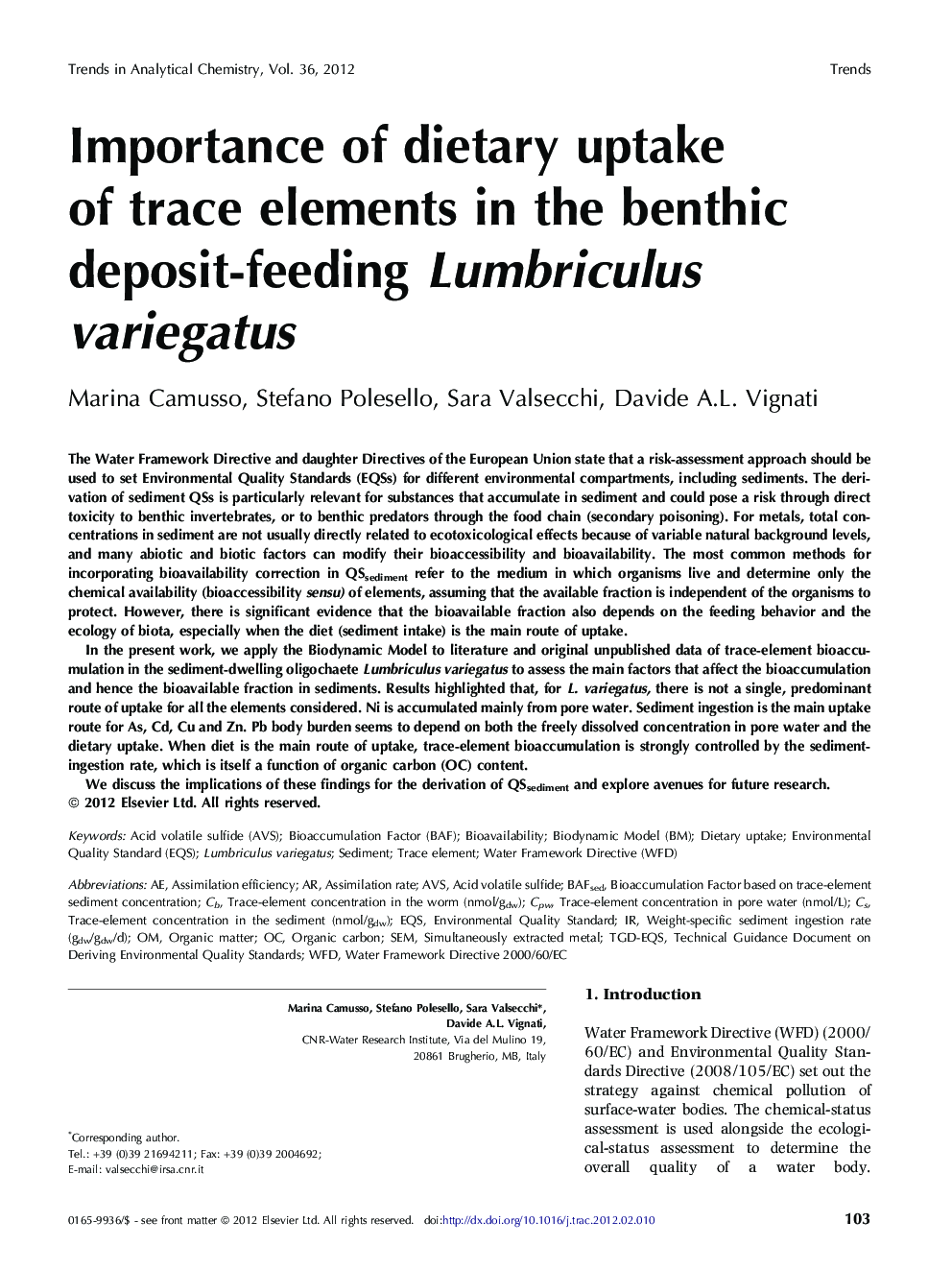| کد مقاله | کد نشریه | سال انتشار | مقاله انگلیسی | نسخه تمام متن |
|---|---|---|---|---|
| 1248041 | 1495928 | 2012 | 10 صفحه PDF | دانلود رایگان |

The Water Framework Directive and daughter Directives of the European Union state that a risk-assessment approach should be used to set Environmental Quality Standards (EQSs) for different environmental compartments, including sediments. The derivation of sediment QSs is particularly relevant for substances that accumulate in sediment and could pose a risk through direct toxicity to benthic invertebrates, or to benthic predators through the food chain (secondary poisoning). For metals, total concentrations in sediment are not usually directly related to ecotoxicological effects because of variable natural background levels, and many abiotic and biotic factors can modify their bioaccessibility and bioavailability. The most common methods for incorporating bioavailability correction in QSsediment refer to the medium in which organisms live and determine only the chemical availability (bioaccessibility sensu) of elements, assuming that the available fraction is independent of the organisms to protect. However, there is significant evidence that the bioavailable fraction also depends on the feeding behavior and the ecology of biota, especially when the diet (sediment intake) is the main route of uptake.In the present work, we apply the Biodynamic Model to literature and original unpublished data of trace-element bioaccumulation in the sediment-dwelling oligochaete Lumbriculus variegatus to assess the main factors that affect the bioaccumulation and hence the bioavailable fraction in sediments. Results highlighted that, for L. variegatus, there is not a single, predominant route of uptake for all the elements considered. Ni is accumulated mainly from pore water. Sediment ingestion is the main uptake route for As, Cd, Cu and Zn. Pb body burden seems to depend on both the freely dissolved concentration in pore water and the dietary uptake. When diet is the main route of uptake, trace-element bioaccumulation is strongly controlled by the sediment-ingestion rate, which is itself a function of organic carbon (OC) content.We discuss the implications of these findings for the derivation of QSsediment and explore avenues for future research.
► Deposit-feeding Lumbriculus variegatus accumulate trace elements mainly via diet.
► Ingestion rate is a key factor in forecasting trace-element accumulation by diet.
► Organic carbon in sediment influences trace-element intake by changing ingestion rate.
► Dietary uptake of elements must be considered in deriving sediment Quality Standards.
Journal: TrAC Trends in Analytical Chemistry - Volume 36, June 2012, Pages 103–112